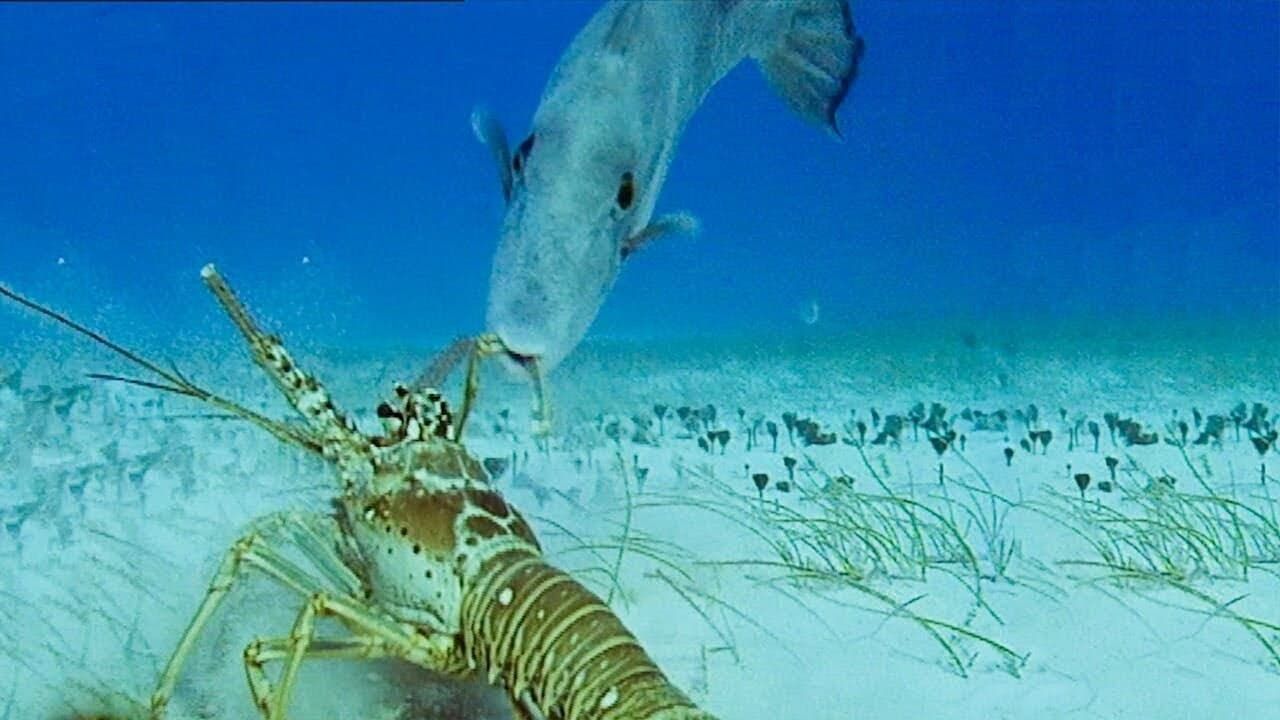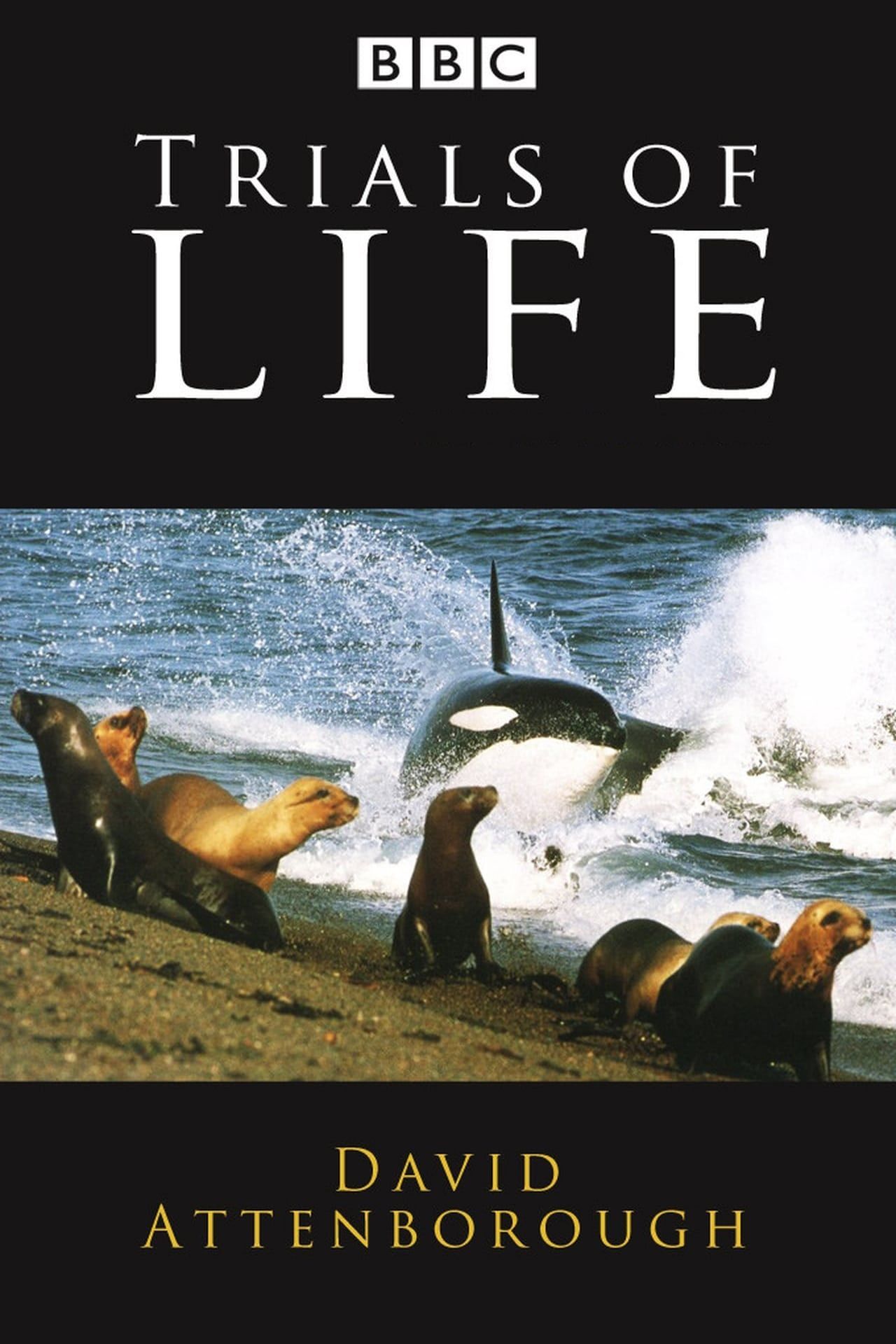

Trials of Life
Season 1
Each of the twelve 50-minute episodes features a different aspect of the journey through life, from birth to adulthood and continuation of the species through reproduction.
Where to Watch Season 1
12 Episodes
- Hunting and Escaping
 E4
E4Hunting and EscapingThis episode looks at those that hunt other creatures and ways of avoiding capture. Attenborough is attacked by a pair of skuas as he approaches their nest, which demonstrates this particular bird's aggressive behaviour, both when taking food and defending its young. Off the shores of Patagonia, the same group of killer whales returns each year to ambush sea lion pups, which stray out of the safer shallow waters. Having grabbed their prey, they take it back out to sea and 'play' with it for some time before killing it. Poison can be used both as a weapon and a deterrent, such as by the viper and tomato frog respectively. Some animals advertise their defensive measures in advance, in case deployment occurs too late. Among them are the skunk, which discharges an appalling smell, and some salamanders that display their toxicity by remaining stationary, with their warning markings visible. Several species of stick insect and their elaborate camouflage are shown. However, none of these methods of protection pose problems to army ants, which can subdue any of their prey, simply by virtue of their size and vast numbers. The Harris hawk is unusual, since it hunts in teams, and a group of six are shown practising their skill in the desert of New Mexico. The final sequence depicts a troop of chimpanzees displaying strategy and co-ordination as it successfully pursues colobus monkeys through a forest in the Ivory Coast. - Finding the Way
 E5
E5Finding the WayThis programme explores forms of navigation. Attenborough starts in Africa at dusk, by describing some of the species that don't rely on sight. The spotted hyena uses its acute sense of smell to guide it while it hunts nocturnally, while galagos urinate on their hands so they can completely mark their movements. Some animals use echolocation and these include swiftlets, bats and river dolphins. By contrast, electric eels use fields of electricity to sense their environment. During the hours of daylight, other methods are employed: the rufous elephant shrew, with its carefully cleared network of pathways, has a sharp mental picture of its habitat - even knowing the various shortcuts with which to evade capture. Attenborough visits the Sahara to illustrate a species that makes the longest overland journey of any insect: cataglyphis, an ant that uses the sun's position to enable it to return to its nest in a straight line. Lobsters in the Bahamas are shown marching in columns to escape stormy waters. In its search for perpetual daylight in which to fish, the Arctic tern makes a 19,000-kilometre journey from one end of the Earth to the other. The albatross is highlighted as one of the most skilled navigators: it can travel up to 1300 kilometres over sea in search of food for its chicks, and still find its way back to the nest. Finally, Attenborough stands on a waterfall in Ireland to tell of the three-year, 10,000-kilometre journey made by elvers. - Home Making
 E6
E6Home MakingThis installment deals with how animals construct their shelters from the elements and predators. Burrows and holes can provide considerable refuge, and Attenborough inspects the home of the American prairie dog, an elaborate construction that has its own air conditioning system. Silk is such a valuable commodity that those that can't make it steal it instead. The hermit hummingbird uses it to attach its nest to the underside of a leaf, while the Indian tailorbird stitches two leaves together. However, the expert in complex nest-building is the weaverbird which makes its abode from over 1,000 strips of grass that are perfectly interwoven - and dismantling it if it fails to attract a mate. The beaver is responsible for one of the biggest animal dwellings: its wooden lodge that rises from the river bed stays in place from one generation to the next, and so requires constant maintenance. Some stingless bees use their wax and the resin of tree bark to create labyrinthine structures containing various compartments. Mud is also used by several creatures, such as the potter wasp and the cliff swallow. The termites' intricate creations allow for security, heating, air conditioning, self-contained nurseries and gardens, and sanitation systems. Attenborough hails the species as the consummate home maker, and explores a 15-foot colony in West Africa that contains 1.5 million insects: he crawls right inside to examine its method of ventilation. - Living Together
 E7
E7Living TogetherWhole communities of different kinds of animals have been committed by evolution to live together. We show how some of these animal partnerships are ancient and intricate, whilst others are just being formed and that the delicate balance of benefit and exploitation is ever-changing. - Fighting
 E8
E8FightingFighting is most usually an expression of competition - for food, for land or for a mate. But all fights do not have to be expressed with physical violence. Some are also ritualised encounters in which conflict is waged by signals and in which the only damage done is psychological. - Talking to Strangers
 E10
E10Talking to StrangersThis episode concentrates on communication. In Kenya, Attenborough accompanies a tribesman who calls to a honeyguide, which in turn answers him and leads the pair to a bees' nest. The tribesman extracts the honey, and some is left to reward the bird. African hunting dogs are shown hunting gazelles, of which the target is the individual that leaps lowest. Larks evade merlin by sending a similar message: by continuing to sing while being chased, it tells the pursuer that its prey is fit and therefore will be difficult to catch. (In 80% of cases this turns out to be true.) Vervet monkeys' cries are among the most complex. Their utterances are effectively words: a vocabulary that defines each of their predators, so an alarm call is specific to a particular threat. Some creatures transmit their presence by display, and Attenborough observes thousands of fireflies illuminating the darkness. Sounds travel further underwater, and over 200 species of fish use them to communicate. In turn, sea lions have become adept at sensing their proximity. However, the most visual aquatic animal is the squid, which uses colour change and posture to communicate. Finally, Attenborough swims with dolphins. They converse with a series of ultrasonic clicks, and each has a family call inherited from its mother: effectively a 'surname'. They also use normal sound, body posture and touch - in short, in terms of ability to communicate, they are man's closest rival. - Continuing the Line
 E12
E12Continuing the LineThe final installment illustrates how species fulfill their ultimate raison d'être and ensure that their genes are passed on to the next generation. It is a universal problem, but one which has given rise to a variety of solutions. Barnacles cannot move, but each has both male and female sex cells, allowing each neighbour to be a potential mate. On the other end of the scale, a female elephant undergoes a long pregnancy - 22 months - and so wishes to ensure that her calf is fathered by a strong and proven male. She is therefore very choosy about her partner. A female chinchilla is even more so, and rejects an unwanted suitor by squirting urine in its face. Mating is a dangerous business when weapons are involved, and a male tarantula approaches his intended with trepidation. Only when he succeeds in holding off her poison fangs is he able to progress any further. For some, the right moments to get together are few and far between: a male crab, for example, must wait until a female moults her shell before he is able to fertilise her. Male sea lions are shown fighting over a harem, and some use the battle to their advantage by making off with reluctant females. Attenborough observes that the monogamous relationships enjoyed by humans are rare within the animal kingdom, but he highlights the Royal albatross as a "beautiful" exception. The pair of birds featured met as five-year-olds, and have been together for twenty years.







